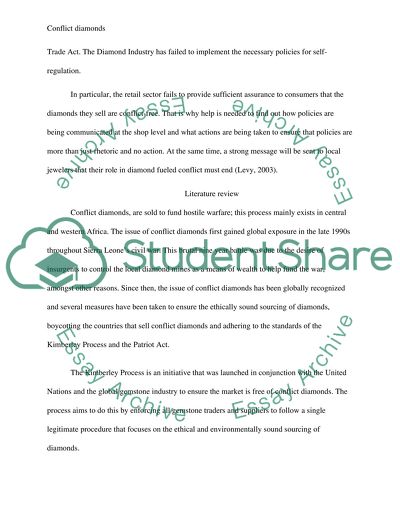Cite this document
(“Conflict Diamonds Essay Example | Topics and Well Written Essays - 1500 words”, n.d.)
Conflict Diamonds Essay Example | Topics and Well Written Essays - 1500 words. Retrieved from https://studentshare.org/philosophy/1493908-conflict-diamonds
Conflict Diamonds Essay Example | Topics and Well Written Essays - 1500 words. Retrieved from https://studentshare.org/philosophy/1493908-conflict-diamonds
(Conflict Diamonds Essay Example | Topics and Well Written Essays - 1500 Words)
Conflict Diamonds Essay Example | Topics and Well Written Essays - 1500 Words. https://studentshare.org/philosophy/1493908-conflict-diamonds.
Conflict Diamonds Essay Example | Topics and Well Written Essays - 1500 Words. https://studentshare.org/philosophy/1493908-conflict-diamonds.
“Conflict Diamonds Essay Example | Topics and Well Written Essays - 1500 Words”, n.d. https://studentshare.org/philosophy/1493908-conflict-diamonds.


